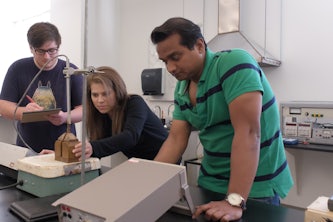The best way to protect personal biomedical data from hackers could be to treat the problem like a game
Yevgeniy Vorobeychik and his research group have developed methods to help assess and mitigate privacy risks in biomedical data sharing

The big idea
Game theory, which tries to predict how the behavior of competitors influences the choices the other players make, can help researchers find the best ways to share biomedical data while protecting the anonymity of the people contributing the data from hackers.
Modern biomedical research, such as the National COVID Cohort Collaborativeand the Personal Genome Project, requires large amounts of data that are specific to individuals. Making detailed datasets publicly available without violating anyone’s privacy is a critical challenge for projects like these.
To do so, many programs that collect and disseminate genomic data obscure personal information in the data that could be exploited to re-identify subjects. Even so, it’s possible that residual data could be used to track down personal information from other sources, which could be correlated with the biomedical data to unearth subjects’ identities. For example, comparing someone’s DNA data with public genealogy databases like Ancestry.com can sometimes yield the person’s last name, which can be used along with demographic data to track down the person’s identity via online public record search engines like PeopleFinders.
Our research group, the Center for Genetic Privacy and Identity in Community Settings, has developed methods to help assess and mitigate privacy risks in biomedical data sharing. Our methods can be used to protect various types of data, such as personal demographics or genome sequences, from attacks on anonymity.
Our most recent work uses a two-player leader-follower game to model the interactions between a data subject and a potentially malicious data user. In this model, the data subject moves first, deciding what data to share. Then the adversary moves next, deciding whether to attack based on the shared data.
Read the full story here.



